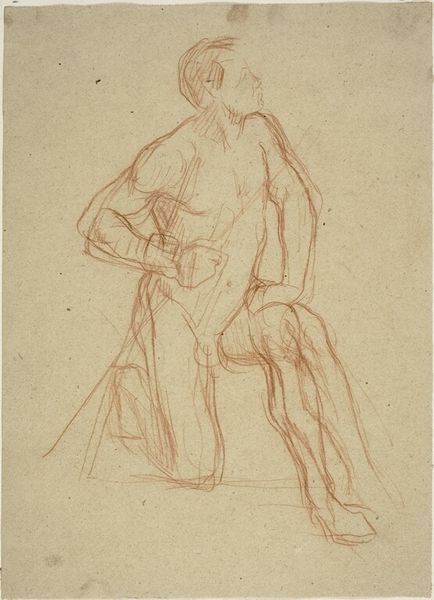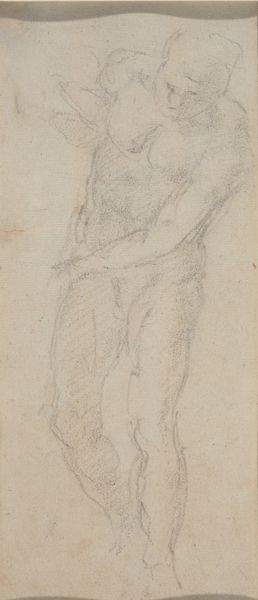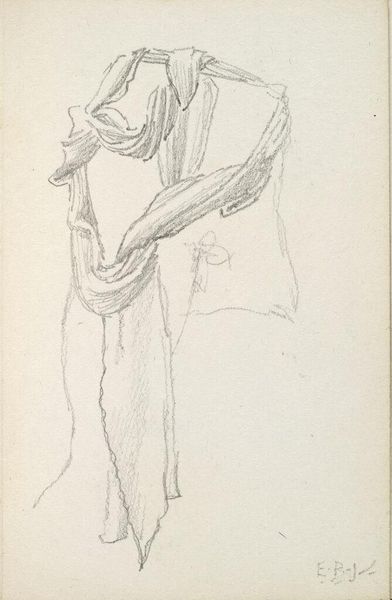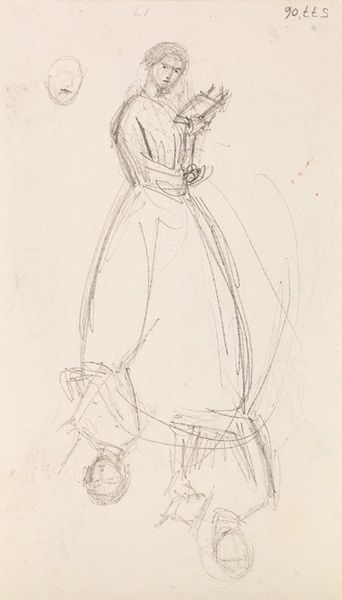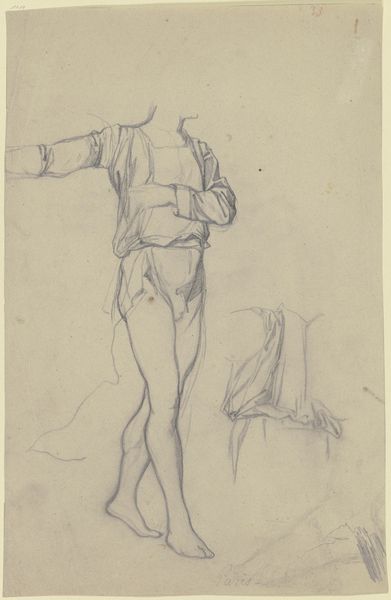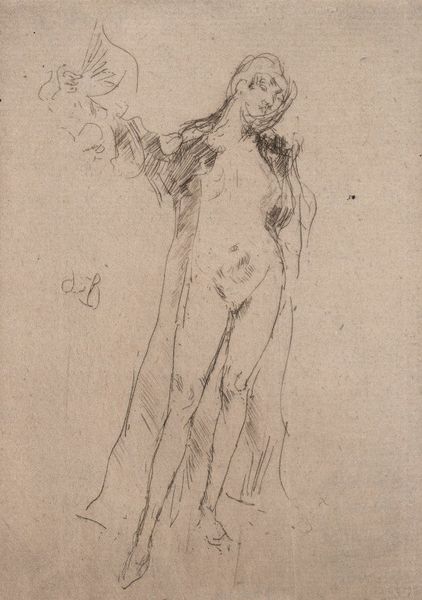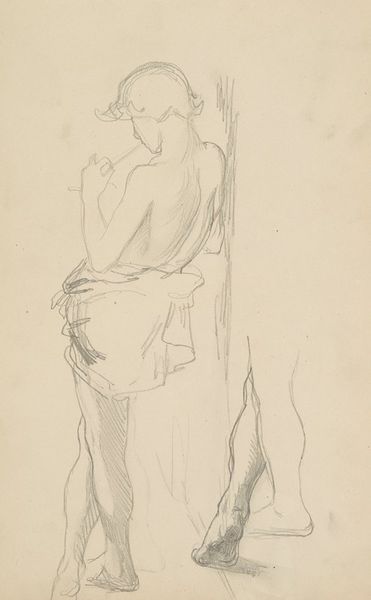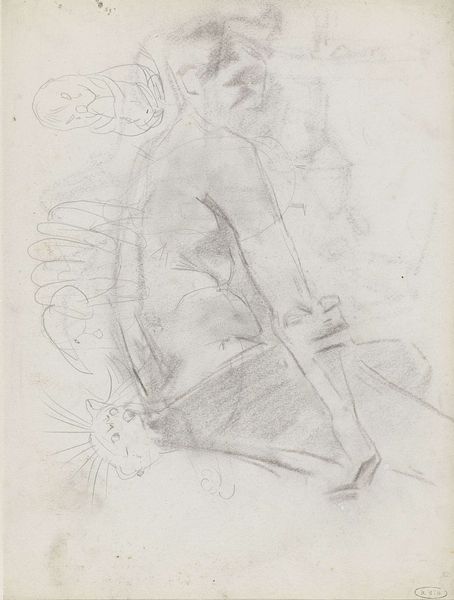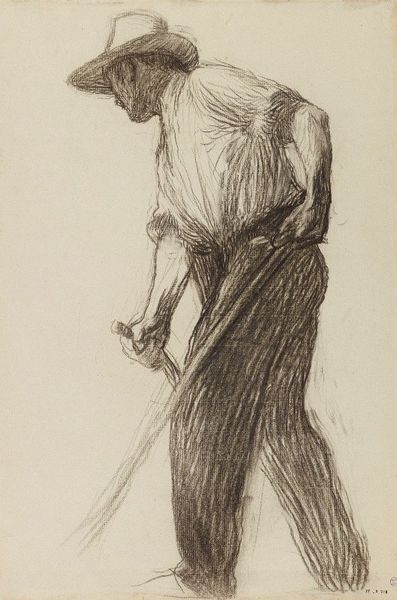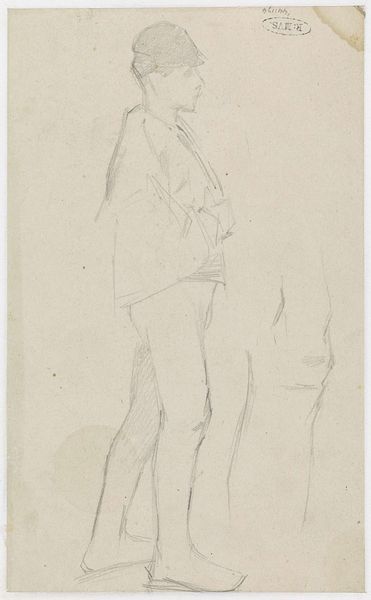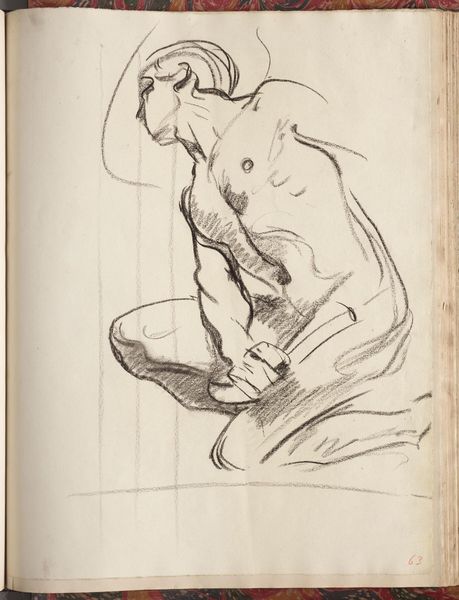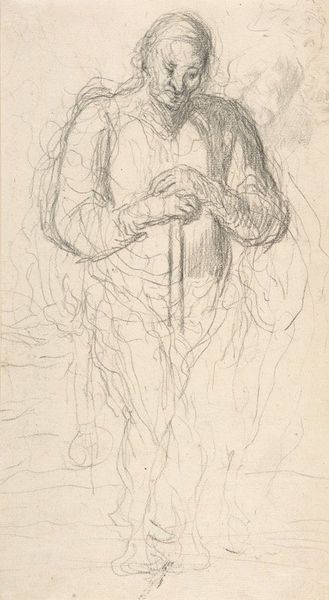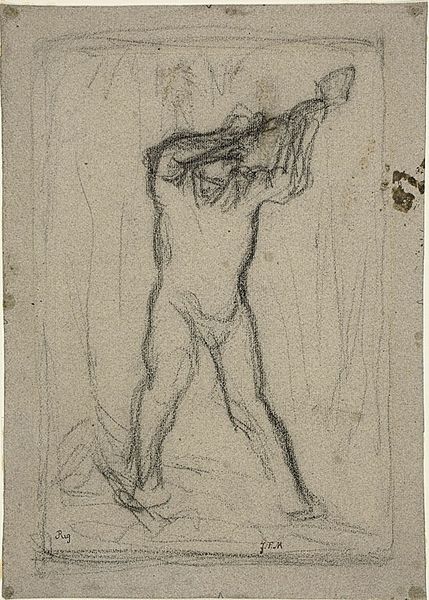
drawing, pencil
#
portrait
#
pencil drawn
#
drawing
#
pencil sketch
#
charcoal drawing
#
pencil drawing
#
pencil
#
pencil work
Copyright: Public Domain: Artvee
Editor: Here we have a pencil drawing by Helene Schjerfbeck, from around 1879 or 1880. It’s titled "Nenä, suu ja leuka; istuva käsivarttaan roikuttava mies", or "Nose, mouth and chin; a seated man dangling his arm.” There’s a fragility to the sketch that’s really striking, and a strong emphasis on anatomy. What do you see in this piece? Curator: Well, immediately the fragmentary nature jumps out. The disembodied facial features above the full figure suggests studies, perhaps exercises in capturing likeness and form. Schjerfbeck is playing with the symbol of the body, and specifically with ways we understand humanity and wholeness. It challenges us to see beauty and meaning even in incompleteness, which resonates with philosophical ideas about existence. Do you think the medium adds to that feeling? Editor: Definitely! The pencil lines are so delicate, almost hesitant. It really highlights the temporary, almost ephemeral nature of the sketch. It feels like a fleeting observation. Curator: Precisely! The choice of pencil amplifies that transience. What I find fascinating is how Schjerfbeck returns to certain images and forms throughout her career. Notice the deliberate contrast in shading – that heavy brow, then that softer handling of the dangling arm. It speaks volumes. Consider too the emotional weight. The arm just *hanging* speaks to possible feelings of burden. Is this a picture about feeling downcast? Or about life-drawing? Editor: That's interesting; I was so focused on the physical form, I didn’t really think about the emotional content! Now, considering Schjerfbeck's later work and struggles with illness, it’s compelling to see this youthful exploration of form potentially hinting at deeper themes. Curator: Exactly. And even in these fragmented forms, she establishes the symbolic language that echoes through her entire artistic life. Seeing art as symbolic sheds new light on not just how we view, but feel about art, too. Editor: It gives me a lot to consider for my paper, and that there is always something beneath the surface to appreciate.
Comments
No comments
Be the first to comment and join the conversation on the ultimate creative platform.
